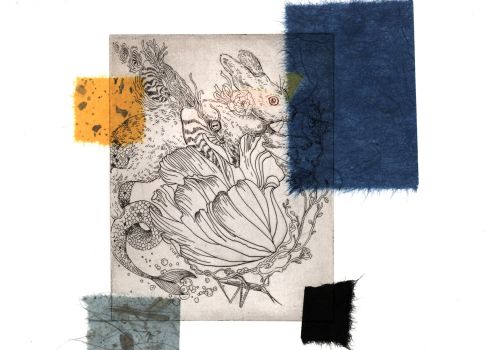
Illustrating Connecticut - Litchfield

|
|
|
Nancy White Cassidy New Milford, Connecticut "Shhh! You must be quiet!", 2007 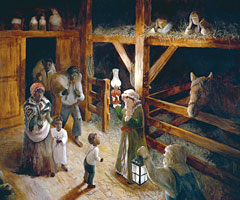 Acrylic on panel, 18 x 24" In 1995, the Connecticut General Assembly authorized the development of the Freedom Trail to recognize and honor the history of enslaved African-Americans. Slavery existed in America from the earliest colonial settlements until it was abolished by the passing of the Thirteenth Amendment to the United States Constitution, which was ratified in Connecticut on May 4, 1865. The Underground Railroad emerged in response to the Fugitive Slave Act of 1703, which allowed for the capture and return of runaway slaves. This illustration was inspired by the escaped slaves of the Underground Railroad and the New Milford Quakers who assisted them. Although the artist’s setting and story is fictitious, it was based on actual events that occurred in her hometown. Nancy White Cassidy noted, "as part of my research, I participated in the Underground Railroad Walking Tour, which includes the Charles A. Sabin House on Lanesville Road and the Augustine A. Thayer House and the Elisha Bostwick House located on Grove Street, which served as sanctuaries for these brave people." The Connecticut Freedom Trail (www.ctfreedomtrail.com) lists the sites around the state that participated in the anti-slavery movement. Robert Crawford Woodbury, Connecticut Sugar Time, 2001 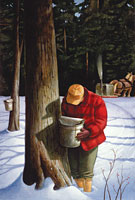 Acrylic on panel, 20 x 14" Appearing on the cover of Yankee Magazine, Sugar Time celebrates maple syrup production in New England and the agricultural programs at Flanders Nature Center, Woodbury, Connecticut. Brian Allen, curator of American paintings at the Sterling and Clark Art Institute remarked, “maple sugar is a symbol of Yankee independence. This activity, called sugaring, signaled the end of winter with bonfires [and] music … and marked the community’s spirit of egalitarian union.” Maple syrup features in the Iroquois Indian legend about Chief Woksis who left a pail of water for his wife beneath a maple tree before his daily hunt for food. Frustrated after several unsuccessful outings, he threw his tomahawk into the maple tree, pulling it out before setting out again. He returned that evening with a large deer, which his wife dressed and cooked. Remarking on the meat’s sweetness, the Chief realized that the bucket contained the maple syrup liquid that had trickled from the tree. Etienne Delessert Lakeville, Connecticut Salisbury Town Hall, 1987 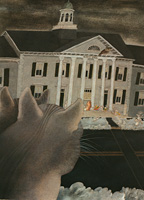 Watercolor, 8 1/2 x 11" Salisbury, Connecticut, incorporated in 1741, is located in the northwest corner of the state and includes the villages of Lakeville, Amesville, Lime Rock, and Taconic. Ethan Allen briefly operated an iron forge here before moving to Vermont to lead the Green Mountain Boys in a rebellion against New York over the disputed New Hampshire land grants. Allen and Benedict Arnold led the raid to capture Fort Ticonderoga in 1775, which was crucial to the colonies’ victory in the American Revolution. Allen was captured by the British during an attack on Montreal later that year and tried in England as a traitor and held as a prisoner of war. The British released him in 1778 and he resumed his political activities in Vermont. Blaine Kruger New Haven, Connecticut The Original Mad Hatter, 2007 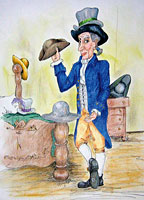 Colored pencil and ink , 20 x 16" Another highlight in Connecticut’s history was Zadoc Benedict’s hat factory, which opened in Danbury in 1780. The factory produced 18 fur hats of rabbit and beaver skins weekly, earning the town the title of hat capital of the world. The founder, Zadoc Benedict, was reputed to be insane, prompting the term, “mad as a hatter.” By 1800, Danbury was the hat manufacturing center in the United States, continuing Connecticut’s pattern of establishing factories in small villages rather than large industrial cities. By 1887, the town's 30 factories were turning out five million hats a year, and Hat City became its nickname. Danbury continued to be a national center for the production of hats until the beginning of the twentieth century when the industry declined. |
|



